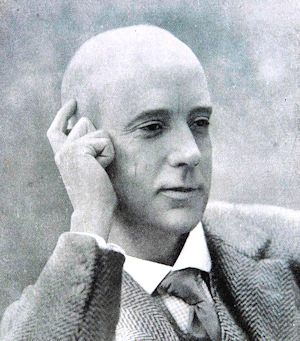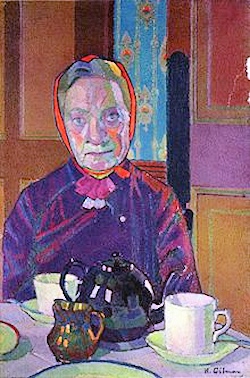Harold Gilman
Harold Gilman was a British Impressionist and a member of the Camden Town Group, sometimes called the English Van Gogh. He grew up at Snargate Rectory, where his father was Rector. Standing next to the church of St Dunstan, the Rectory was built in 1891 and first occupied by Gilman’s father.
Born in 1876, the second of a clergyman’s seven children, he started drawing when he was 15 years old, after a severe hip injury left him bedridden for two years. At the Slade School of Fine Art in London, where he studied between 1897 and 1901, he rubbed shoulders with a golden, glamorous generation, including William Orpen and Augustus John. He lived at Snargate Rectory till his thirties, when he brought his bride Grace to live there, for the first two years of their marriage, 1902-04.
Gilman attended Tonbridge School at which he badly injured his hip in 1891, leaving him incapacitated for nearly three years, during which time he discovered his love of art.
In 1896 he enrolled at Hastings School of Art in Sussex, and from 1897 to 1901 he attended the Slade School of Fine Art between 1897 and 1901, where his contemporaries included Spencer Gore, Wyndham Lewis, Augustus John, and the famous tutor Henry Tonks.

Harold Gilman
His father continued to live in Snargate until his death in 1917. Harold Gilman only lived two years longer, dying in 1919 as one of the numerous victims of the so-called Spanish Influenza outbreak at the end of the First World War.
He was one of the most gifted English painters of his generation and one of the most distinctive in his reaction to Post-Impressionism. Despite dying at the age of forty-three in 1919, his strong-minded and ardent personality, as revealingly displayed in Walter Sickert’s portrait of c.1912, meant that he made a lasting impact on the British art world at the beginning of the twentieth century. An impressive series of portraits from 1913 revealed Gilman's degree of physiological insight and sympathy, particularly with the denizens of working-class London, portrayed with a clear-eyed lack of sentimentality.
Gilman became one of the leading exponents of post-impressionism in Britain, known for his use of thick impasto and gaudy, risqué colours – hot pinks and vermilion, alongside garish greens. “Edwardian painting in Britain,” says Rawlin, “is often rather tasteful and polite. But there’s something raw and quite un-British about Gilman’s vivid paintings.”
Gilman was a fellow member with John Nash of the short-lived Cumberland Market Group, an artistic group formed in the earl 20th century.
Gilman died in London in February 1919, of the Spanish flu.
![]() Reference and more information
Reference and more information
![]() Visitors Homepage
Visitors Homepage
![]() History Homepage
History Homepage

Mrs Mounter at the Breakfast Table, 1917


















